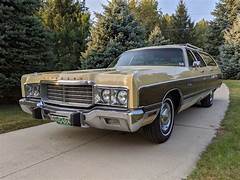On November 29, 1973, the United States automotive industry faced a severe blow as one of its major players, Chrysler Corporation, announced the closure of several manufacturing plants. This event marked a significant chapter in the challenges faced by the American auto industry during the 1970s, a period marked by economic downturns, oil crises, and increased foreign competition. The early 1970s were a tumultuous time for the U.S. economy, and the automotive sector was not immune to the challenges. The industry had been grappling with rising fuel prices, stricter emission standards, and increased competition from foreign automakers. Against this backdrop, Chrysler, one of the "Big Three" American automakers along with General Motors and Ford, found itself in financial distress. Chrysler's troubles were exacerbated by the 1973 oil crisis, triggered by the Arab oil embargo in response to geopolitical events in the Middle East. The embargo led to a spike in oil prices, which, in turn, resulted in a sharp decline in demand for large, fuel-inefficient vehicles—precisely the kind of vehicles that constituted a significant portion of Chrysler's product lineup at the time. Facing financial strain and a dwindling market for its products, Chrysler made the difficult decision to close several manufacturing plants on November 29, 1973. The move was part of a broader effort to streamline operations and cut costs amid challenging economic conditions. The closures impacted thousands of workers and reverberated through communities that were heavily dependent on the automotive industry for employment and economic stability. The decision to close plants was a stark acknowledgment of the economic challenges facing the American auto industry. It reflected the need for domestic automakers to adapt to changing market dynamics, including a growing demand for smaller, more fuel-efficient cars. While the closures were a painful but necessary step for Chrysler's survival, they also underscored the broader structural issues facing the industry. In response to the crisis, the U.S. government stepped in to provide financial assistance to Chrysler. In 1979, Congress passed the Chrysler Corporation Loan Guarantee Act, which authorized a loan package to help the struggling automaker avoid bankruptcy. The loan, totaling $1.5 billion, was a lifeline for Chrysler, allowing the company to restructure its operations and remain afloat. Chrysler's experience in 1973 and the subsequent government intervention marked a turning point for the American auto industry. It highlighted the vulnerability of domestic automakers to external economic shocks and underscored the need for adaptability in the face of changing consumer preferences and global economic conditions. The events of November 29, 1973, serve as a reminder of the challenges faced by an industry that plays a crucial role in the nation's economy, as well as the resilience and capacity for recovery that characterize the American automotive landscape.
29 Nov 1973 U.S.A. — Chrysler Closes Plants
